Abstract
We evaluated the direct and generalized effects of cues-pause-point language training procedures on immediate echolalia and correct responding in two severely retarded females. Two experiments were conducted with each subject in which the overall goal was to encourage them to remain quiet before, during, and briefly after the presentation of questions and then to verbalize on the basis of environmental cues whose labels represented the correct responses. Multiple baseline designs across question/response pairs (Experiment I) or question/response pairs and settings (Experiment II) demonstrated that echolalia was rapidly replaced by correct responding on the trained stimuli. More importantly, there were clear improvements in subjects' responding to untrained stimuli. Results demonstrated that the cues-pause-point procedures can be effective in teaching severely retarded or echolalic individuals functional use of their verbal labeling repertoires.
Full text
PDF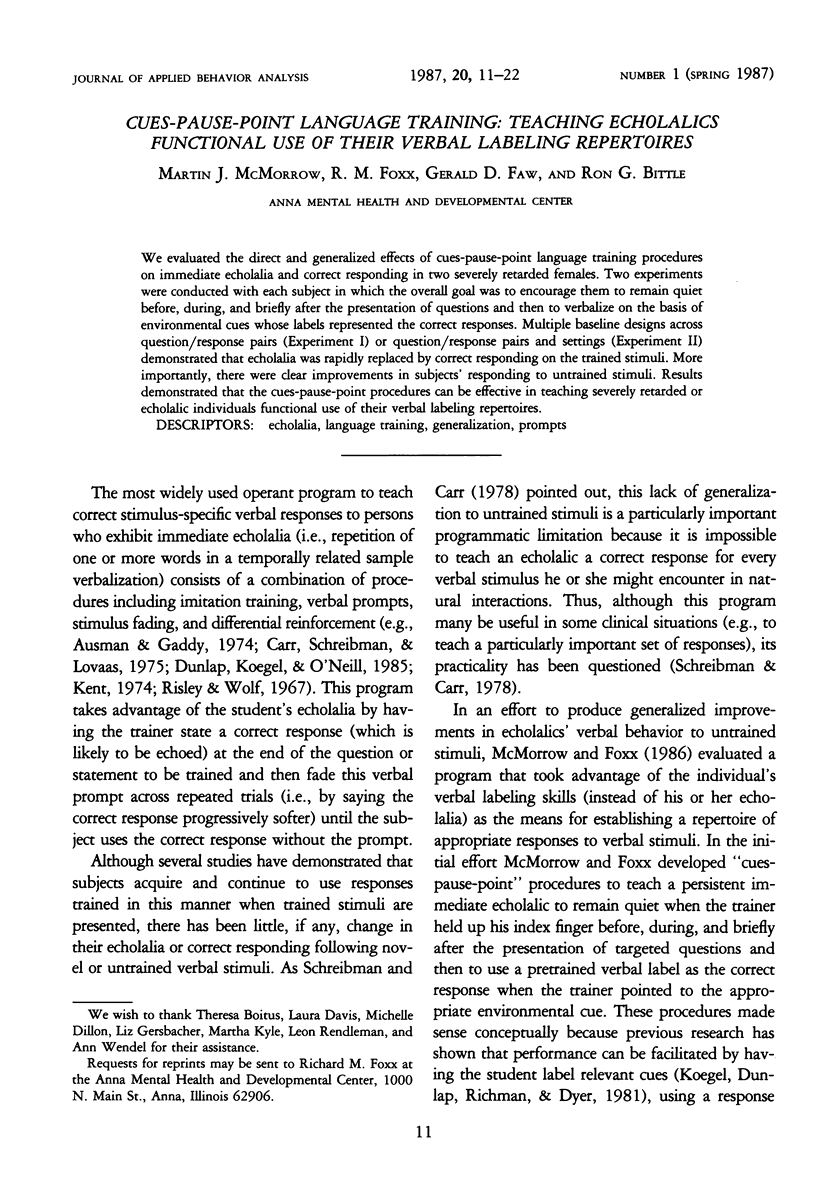
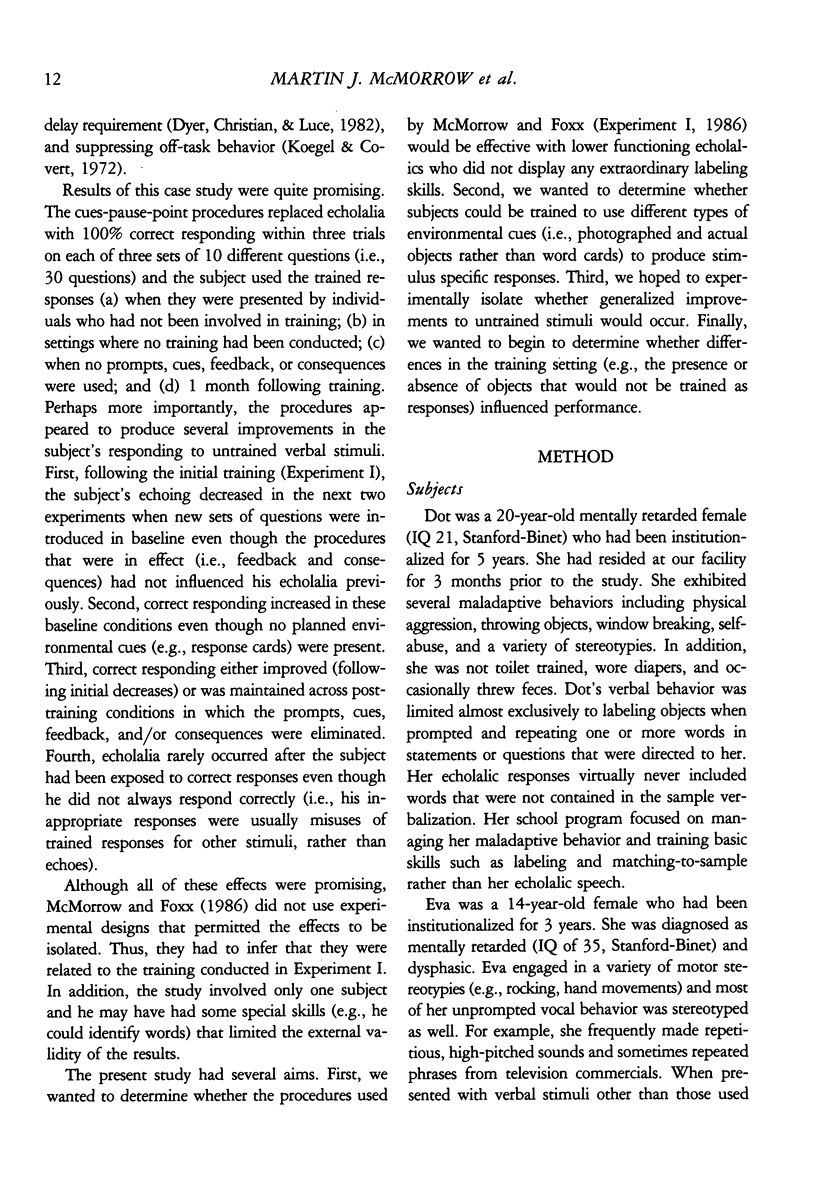
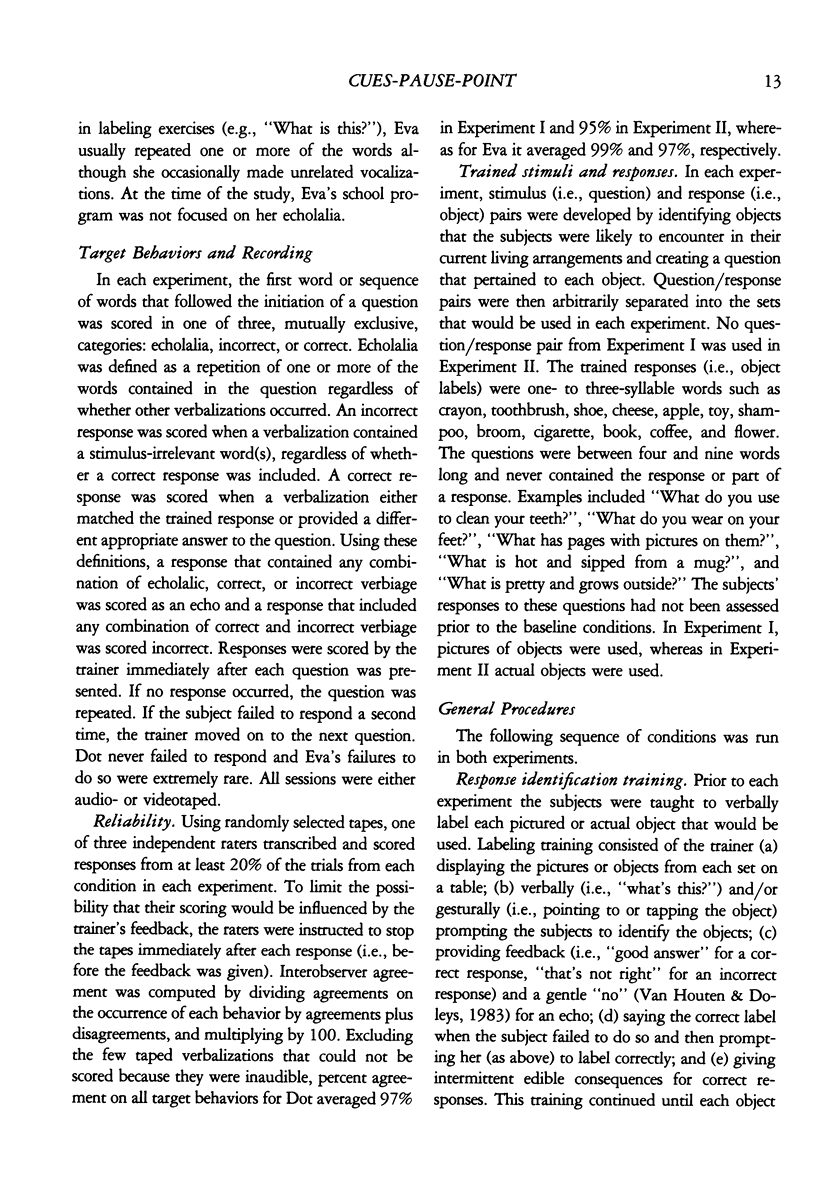
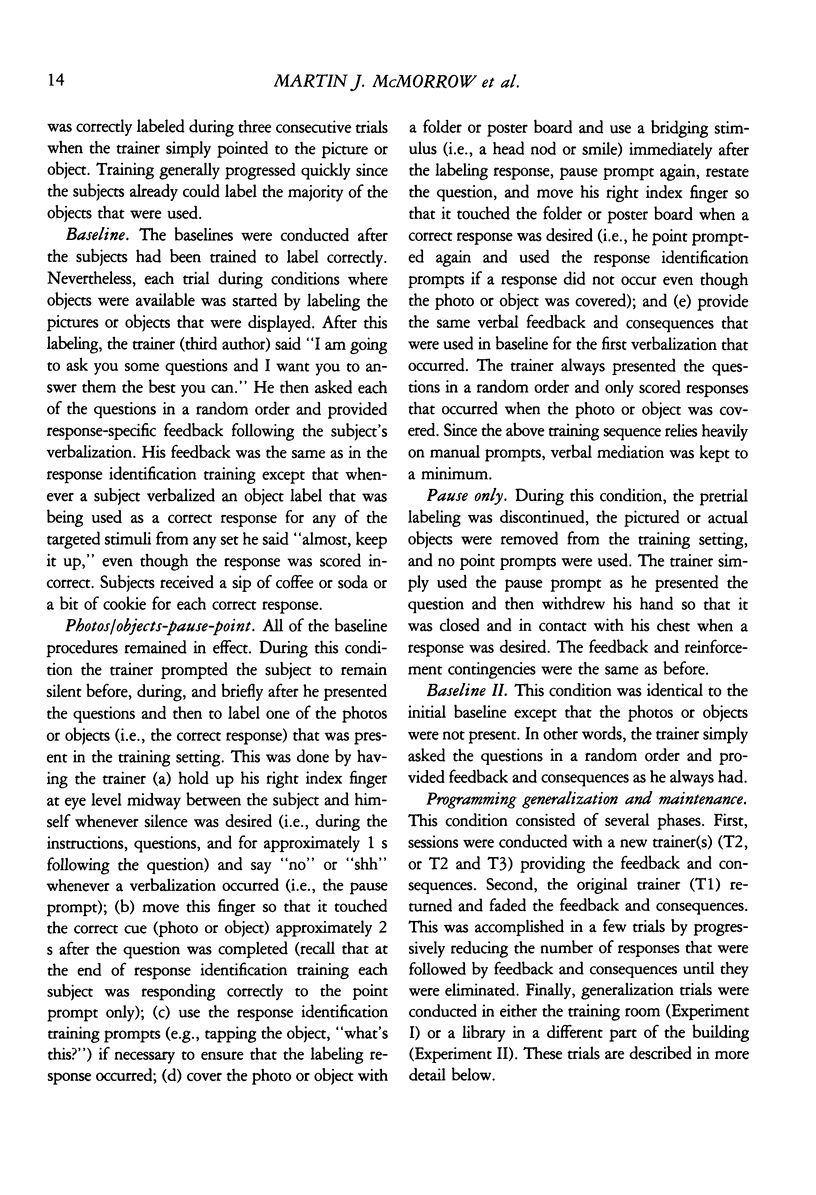
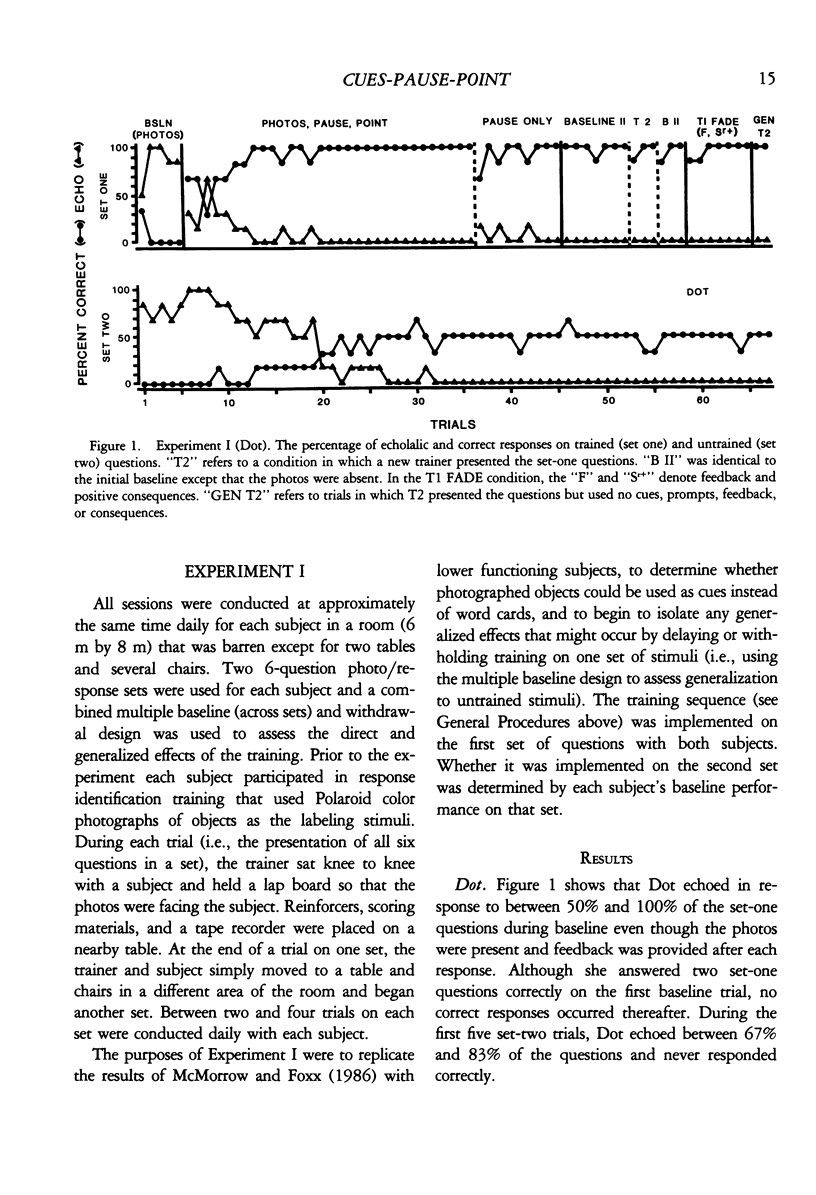
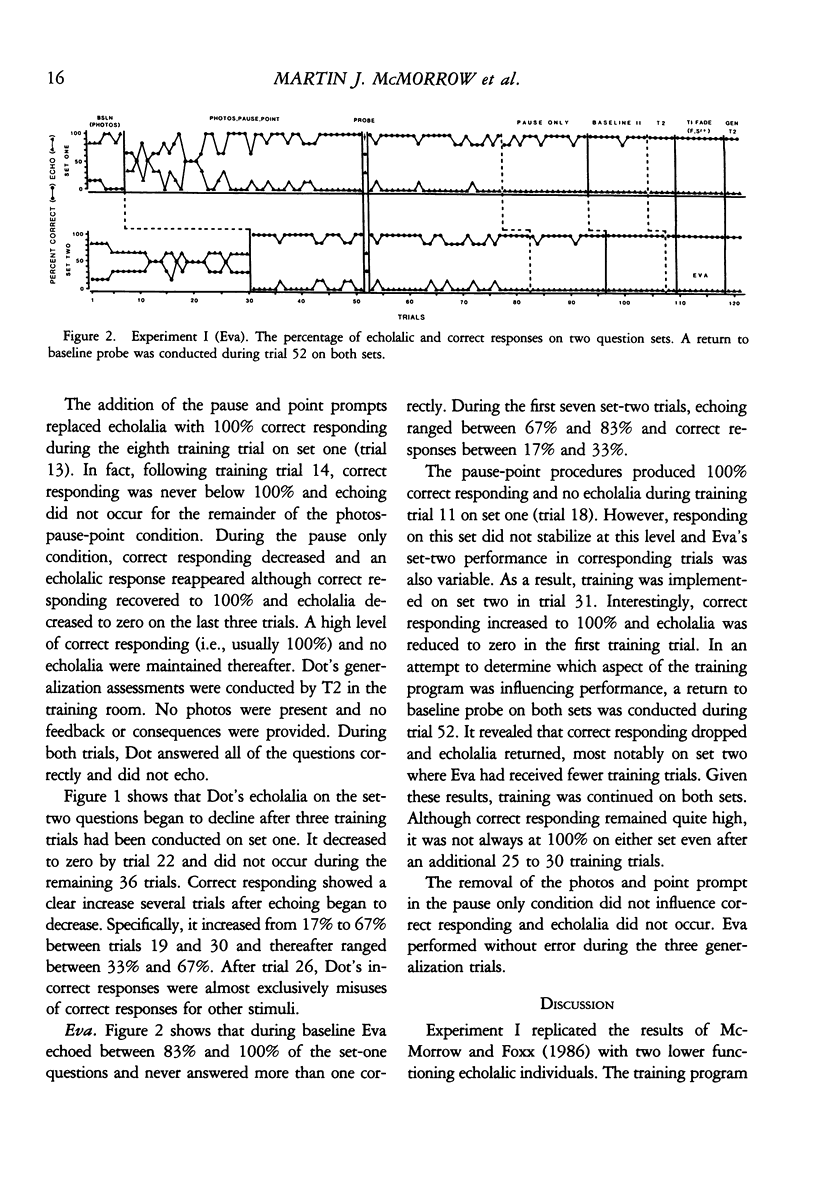
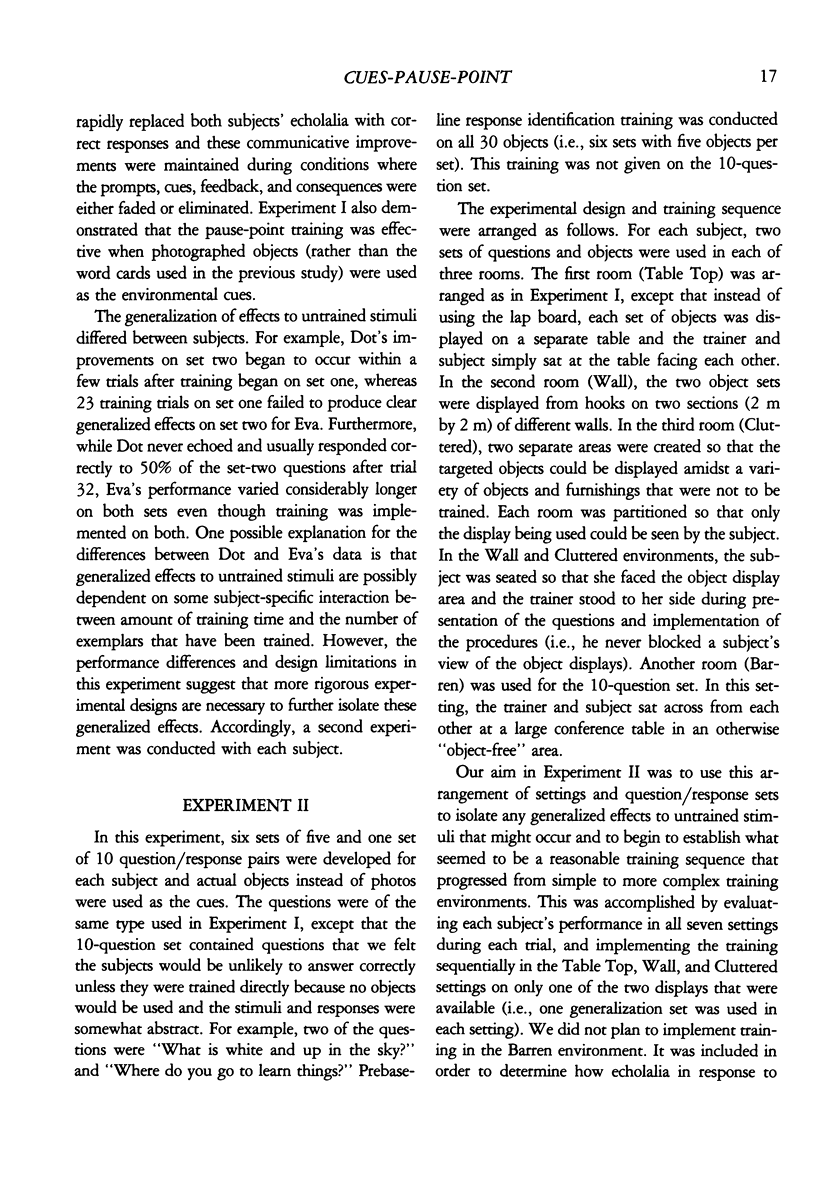
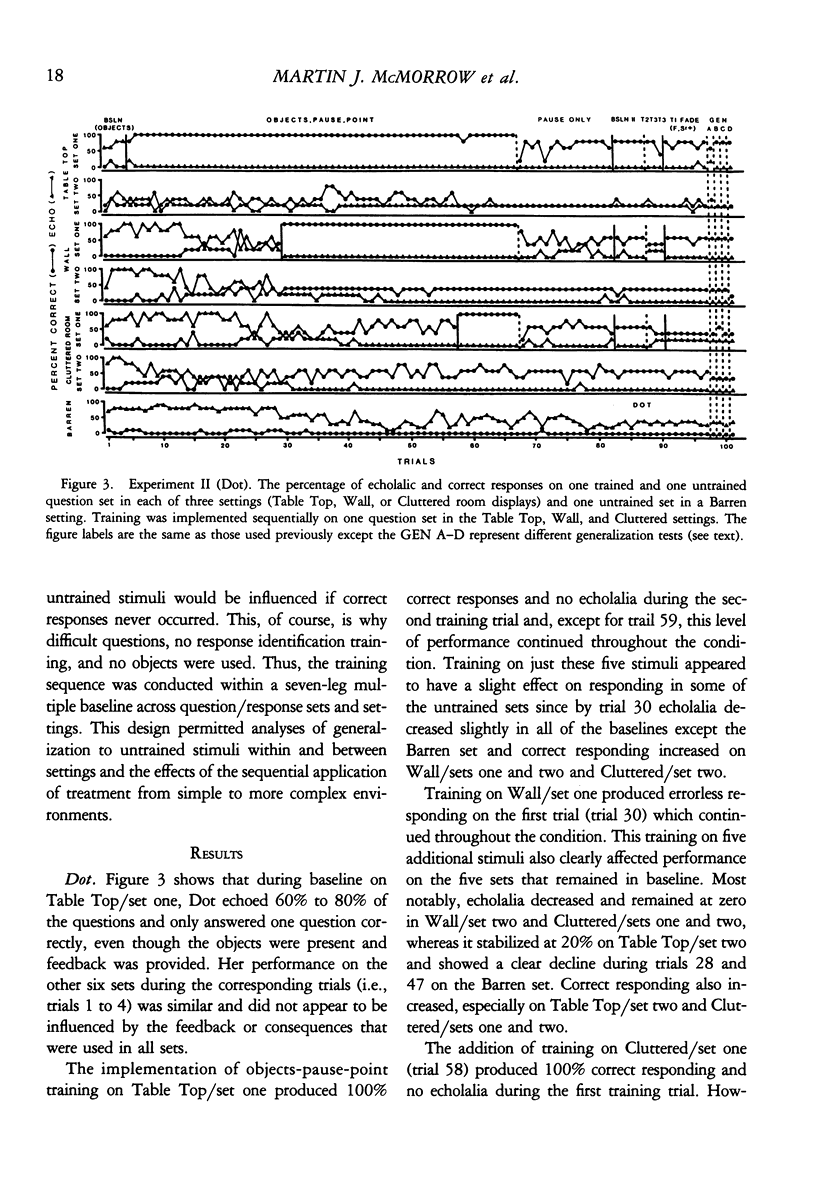
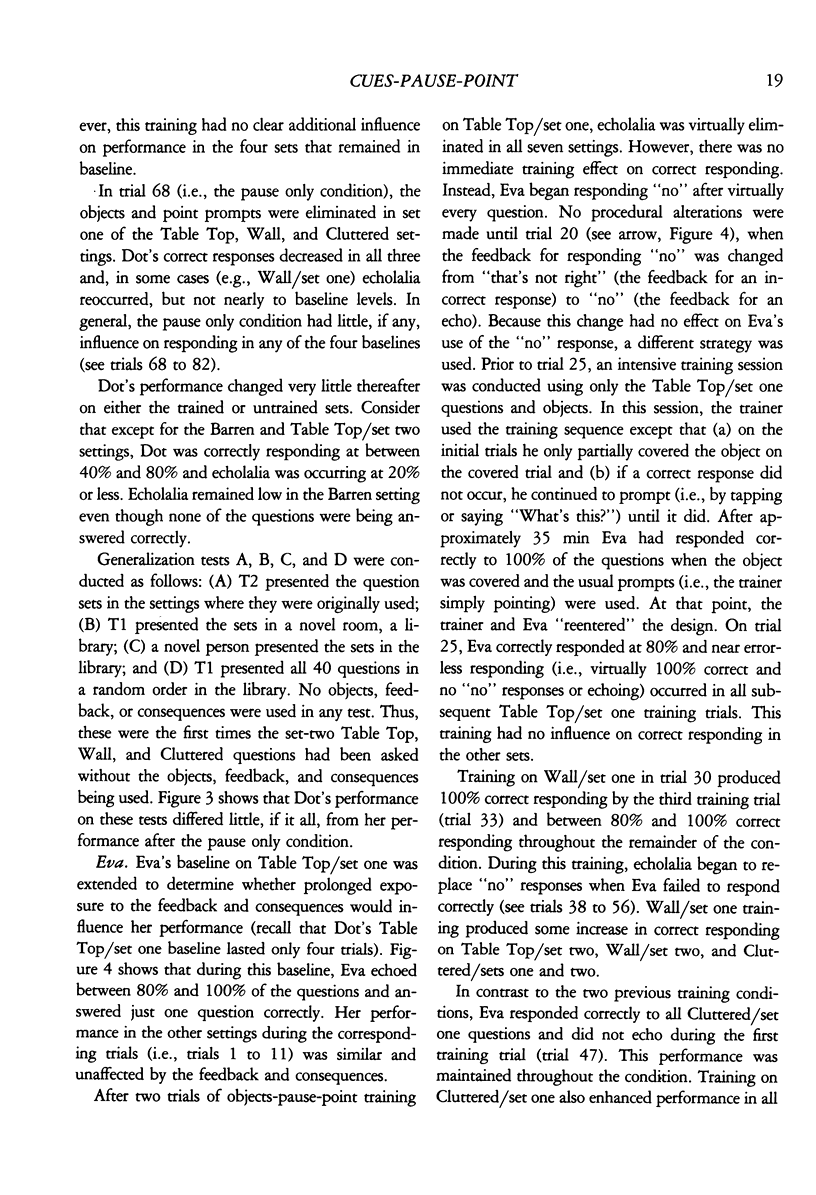
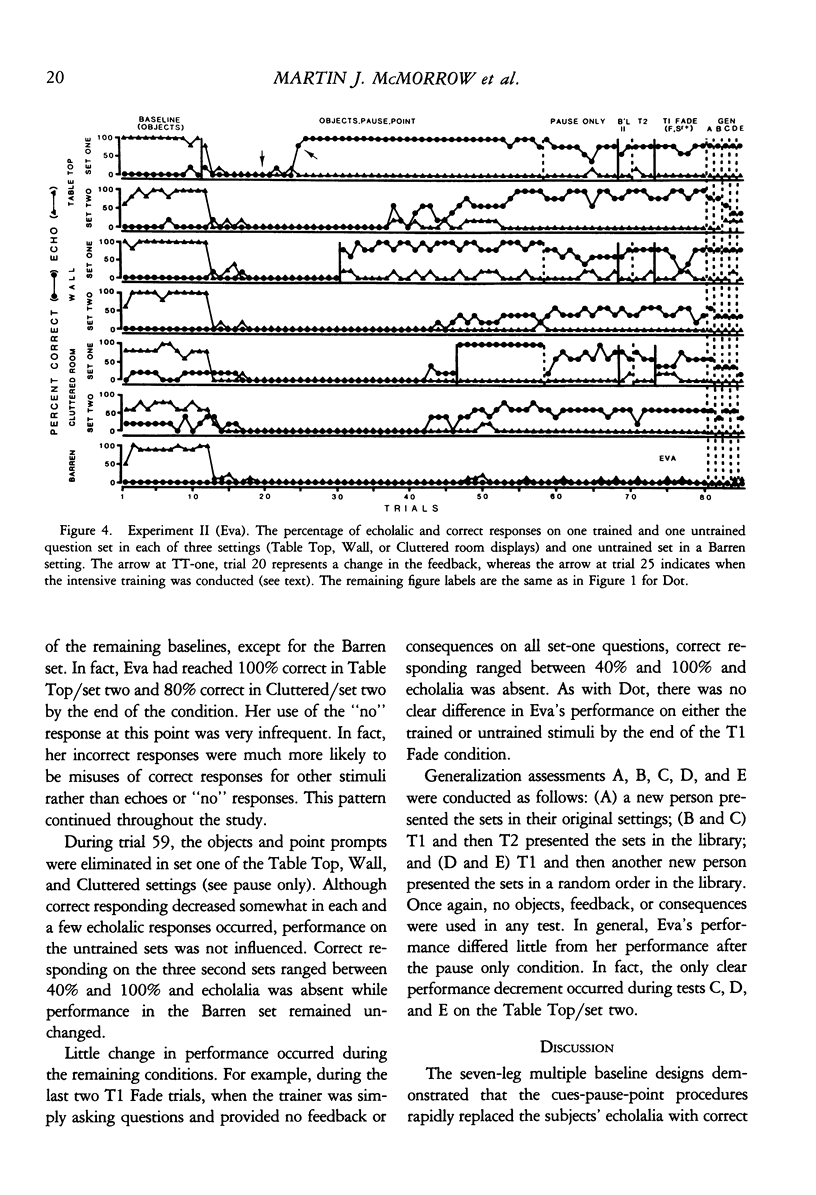
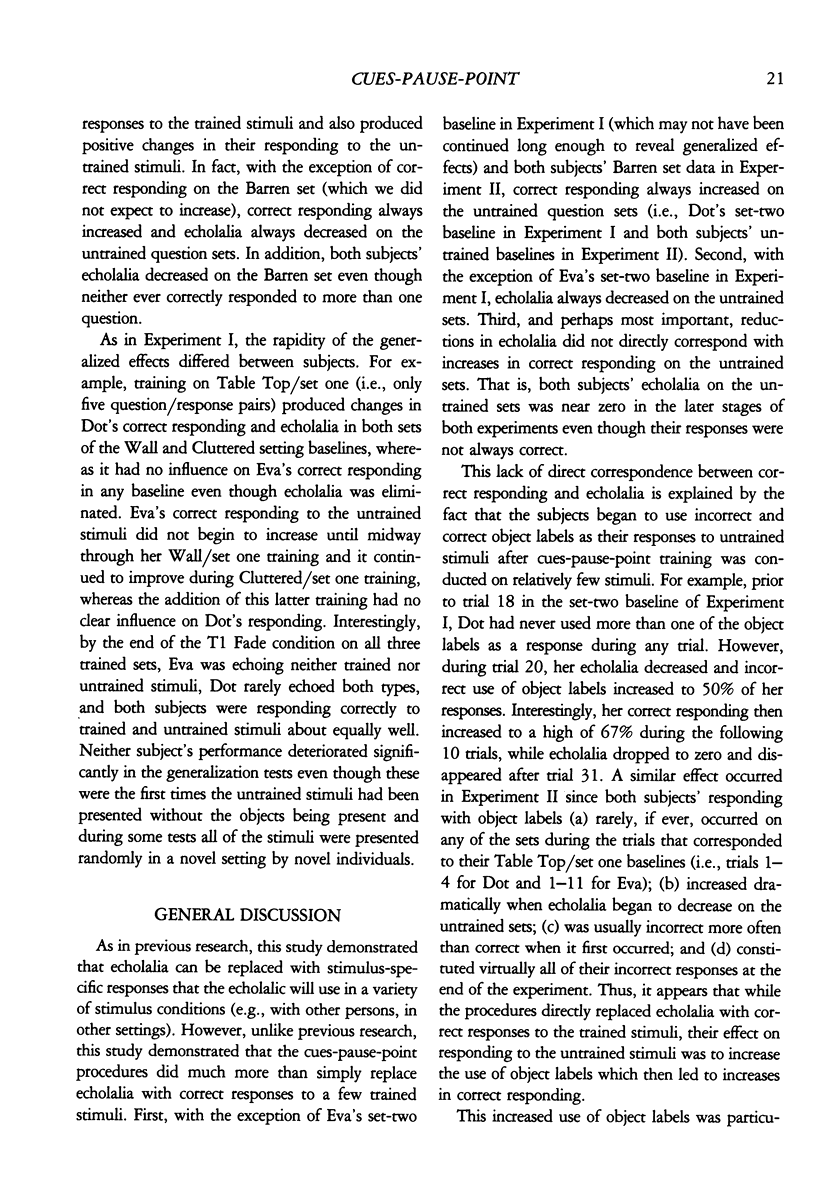
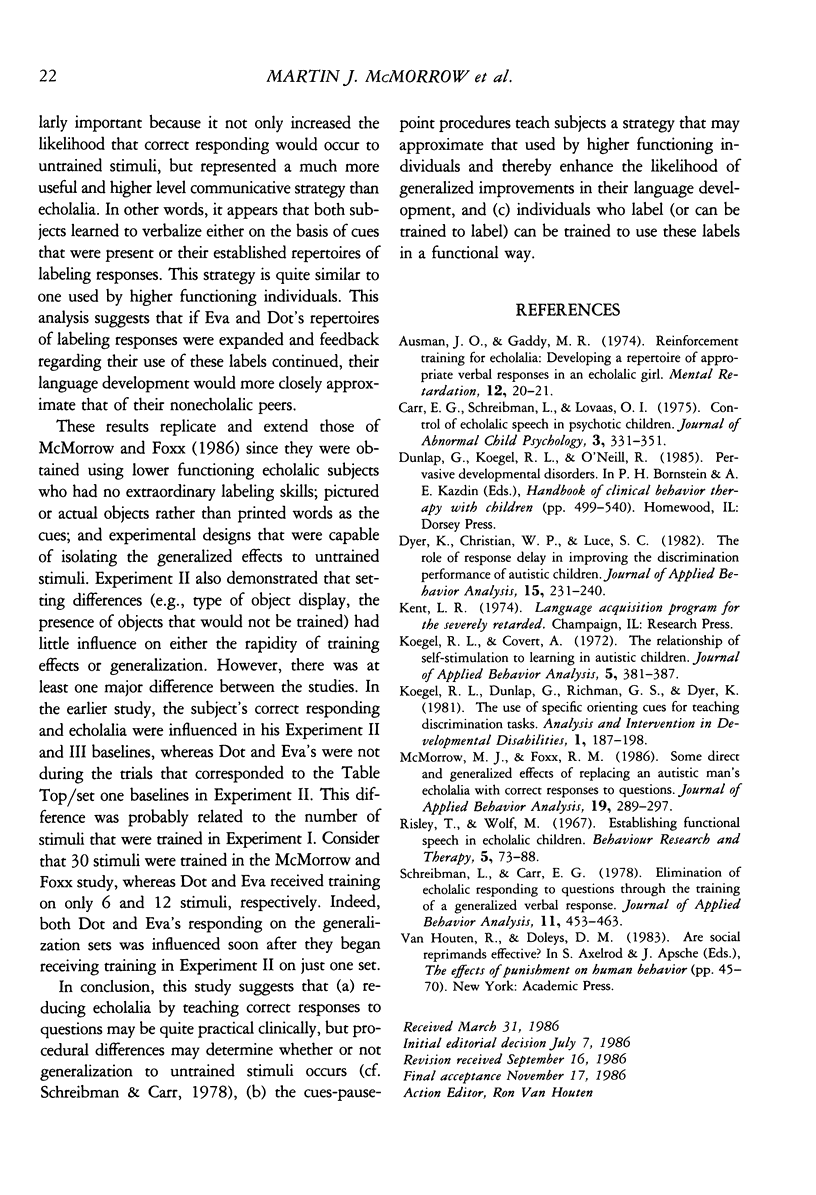
Selected References
These references are in PubMed. This may not be the complete list of references from this article.
- Carr E. G., Schreibman L., Lovaas O. I. Control of echolalic speech in psychotic children. J Abnorm Child Psychol. 1975;3(4):331–351. doi: 10.1007/BF00917420. [DOI] [PubMed] [Google Scholar]
- Dyer K., Christian W. P., Luce S. C. The role of response delay in improving in the discrimination performance or autistic children. J Appl Behav Anal. 1982 Summer;15(2):231–240. doi: 10.1901/jaba.1982.15-231. [DOI] [PMC free article] [PubMed] [Google Scholar]
- Koegel R. L., Covert A. The relationship of self-stimulation to learning in autistic children. J Appl Behav Anal. 1972 Winter;5(4):381–387. doi: 10.1901/jaba.1972.5-381. [DOI] [PMC free article] [PubMed] [Google Scholar]
- McMorrow M. J., Foxx R. M. Some direct and generalized effects of replacing an autistic man's echolalia with correct responses to questions. J Appl Behav Anal. 1986 Fall;19(3):289–297. doi: 10.1901/jaba.1986.19-289. [DOI] [PMC free article] [PubMed] [Google Scholar]
- Risley T., Wolf M. Establishing functional speech in echolalic children. Behav Res Ther. 1967 May;5(2):73–88. doi: 10.1016/0005-7967(67)90001-0. [DOI] [PubMed] [Google Scholar]
- Schreibman L., Carr E. G. Elimination of echolalic responding to questions through the training of a generalized verbal response. J Appl Behav Anal. 1978 Winter;11(4):453–463. doi: 10.1901/jaba.1978.11-453. [DOI] [PMC free article] [PubMed] [Google Scholar]


